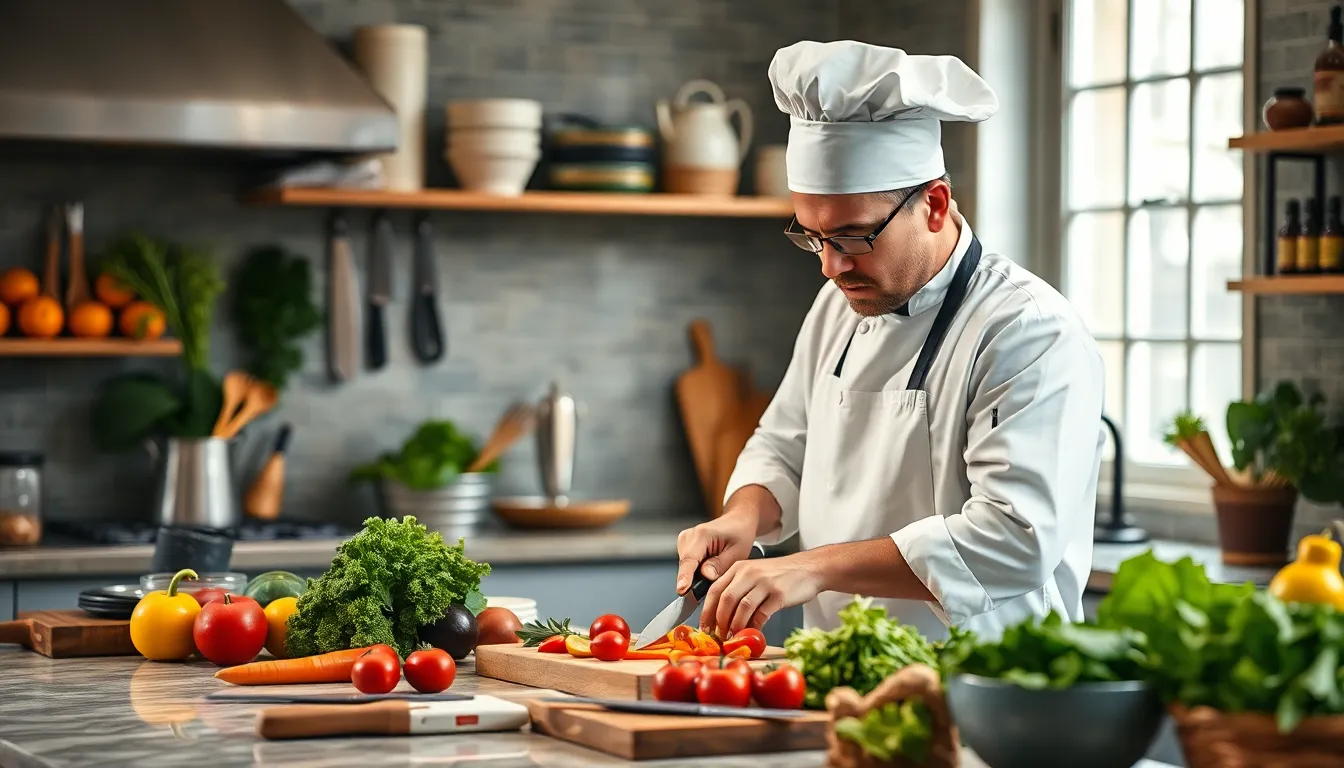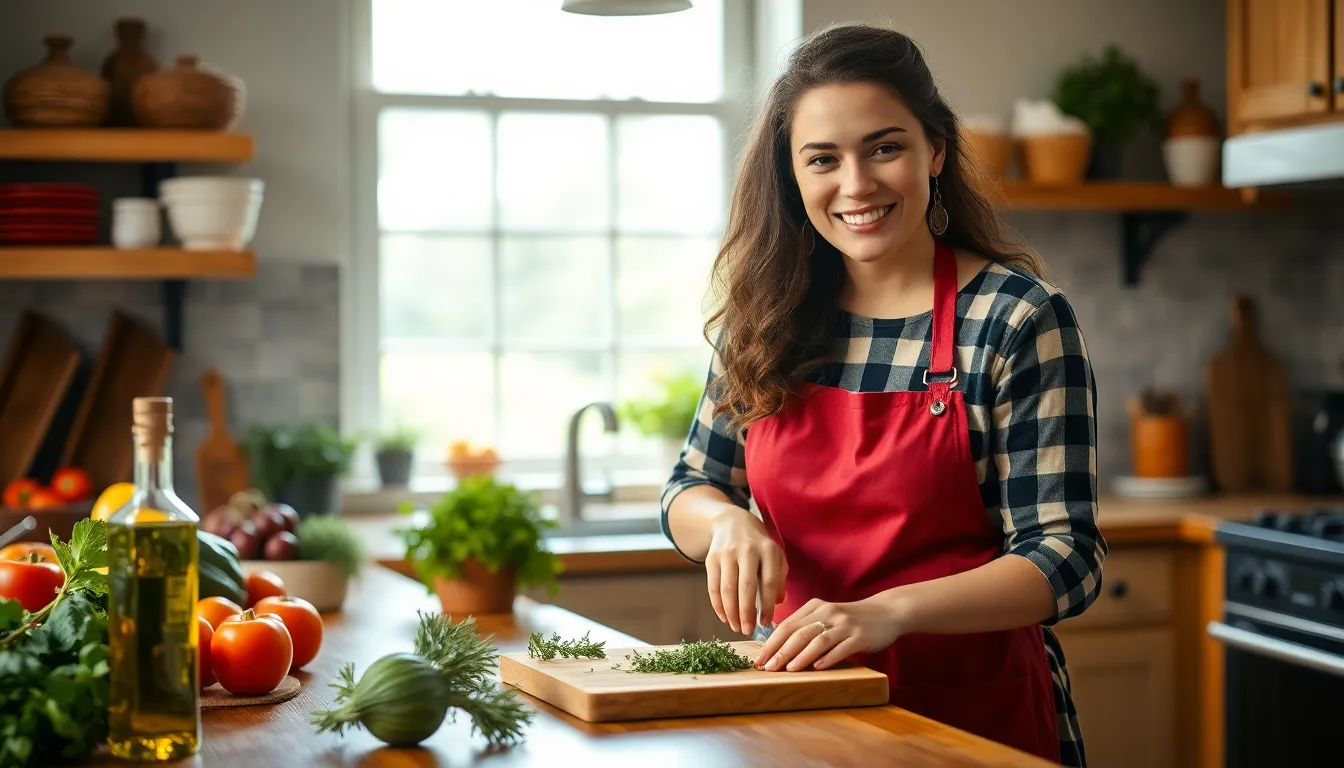In the world of cooking, there’s a treasure trove of culinary secrets waiting to be discovered. Whether it’s the perfect pinch of salt or a dash of unexpected spice, these hidden gems can transform a bland dish into a culinary masterpiece. Who knew that a little bit of love—and maybe a splash of wine—could elevate a simple meal into a feast fit for royalty?
Table of Contents
ToggleUnderstanding Culinary Secrets
Culinary secrets encompass techniques and tips that enhance cooking creativity and flavor. These hidden gems can transform ordinary meals into extraordinary experiences.
Definition of Culinary Secrets
Culinary secrets refer to unique techniques, ingredients, and combinations that elevate cooking. Examples include using fresh herbs at the end of cooking or adding acid like lemon juice after sautéing. Chefs often uncover these secrets through years of experience and experimentation. Each secret has distinct applications that can make a significant difference in taste and presentation.
Importance in Cooking
Culinary secrets hold immense importance in the world of cooking. They can boost flavor profiles and improve the overall dining experience. For instance, a simple pinch of salt or a dash of spice can enhance taste, making a dish memorable. These secrets also promote creativity, encouraging cooks to explore new combinations and techniques. Mastering them can lead to innovation and distinctive culinary styles. By understanding and applying culinary secrets, one can consistently achieve impressive results in the kitchen.
Essential Culinary Techniques

Culinary techniques serve as foundational skills that enhance cooking. Mastery of these techniques elevates flavors and presentation.
Knife Skills
Knife skills involve various cutting techniques essential for effective meal preparation. Chopping, mincing, and julienning create uniform pieces, allowing for even cooking and a pleasing appearance. Precision in knife work improves presentation and can enhance flavors by maximizing surface area. Learning to hold a knife correctly ensures efficiency and safety. Practicing these skills leads to improved speed and confidence in the kitchen.
Cooking Methods
Understanding cooking methods broadens a cook’s repertoire and enriches dishes. Techniques such as roasting, sautéing, and steaming each bring distinct flavors and textures. Roasting enhances natural sweetness, while sautéing preserves freshness and color. Steaming retains nutrients and provides a light cooking option. Experimenting with various methods allows for creativity and adaptability in the kitchen. Adopting these techniques can significantly influence the final outcome of a dish.
Flavor Enhancements
Flavor enhances meal enjoyment, making dishes memorable. Exploring herbs, spices, marinades, and sauces provides the necessary depth.
Herbs and Spices
Using fresh herbs elevates dishes incredibly. Basil, thyme, and rosemary impart aromatic qualities that enrich recipes. Ground spices like cumin, coriander, and paprika add warmth and complexity. When preparing a dish, incorporate these ingredients during cooking for deeper flavors. Adding herbs at the end of cooking preserves their unique essence, delivering a fresh punch. Experimenting with combinations unlocks new taste dimensions, allowing cooks to develop signature flavors that captivate palates.
Marinades and Sauces
Marinades tenderize and infuse proteins with flavor. Acidic components like vinegar or citrus juice soften tissues, enhancing absorption of flavors. Oil contributes richness, while added herbs and spices create a balanced profile. Sauces play a vital role in final presentations and taste. A well-prepared sauce ties diverse elements together, providing harmony on the plate. Homemade sauces, crafted with fresh ingredients, offer superior quality compared to store-bought versions. Innovating with flavors in marinades and sauces transforms ordinary meals into culinary delights.
Presentation and Plating
Presentation plays a vital role in the dining experience. Beautifully plated dishes can entice diners and heighten their anticipation of flavor.
The Art of Plating
Plating involves arranging food attractively on a plate. Cooks often focus on balance, symmetry, and height to create visual interest. Choosing the right plate size enhances presentation; larger plates may create space, while smaller ones can highlight a dish’s details. Various techniques, such as layering ingredients or using sauces as a base, add depth and creativity. Experimenting with shapes, like circles or squares, helps emphasize the dish’s elements. Ultimately, it’s essential to remember that simplicity can often make a bolder statement.
Color and Texture
Incorporating color enhances a dish’s visual appeal. Vibrant ingredients, like fresh herbs or colorful vegetables, create contrast that draws the eye. Various textures also contribute to a captivating plate; pairing creamy elements with crunchy toppings adds dimension. Placing a variety of ingredients together offers a feast for the senses. Fresh greens alongside cooked proteins or bright garnishes provide a visual pop. Paying attention to color and texture can significantly impact flavor perception and overall enjoyment.
Cultural Culinary Secrets
Culinary traditions vary widely across cultures, showcasing unique ingredients and techniques. These regional differences often shape flavor profiles and cooking methods.
Regional Variations
Dishes from different regions reflect local culture and climate. Mediterranean cuisine highlights fresh vegetables, olive oil, and herbs. In contrast, Asian cooking often emphasizes rice, soy sauce, and a variety of spices. Each area may feature distinctive cooking styles, such as grilling in the United States or steaming in China. Notably, the spices used in Indian curries create bold flavors, while Scandinavian cuisine often incorporates preserved fish. Understanding these regional variations enriches one’s culinary perspective, allowing cooks to explore diverse tastes and textures.
Traditional Recipes
Traditional recipes serve as cultural cornerstones, passed down through generations. Family gatherings often revolve around these cherished dishes. Italian pasta recipes may require specific techniques, ensuring that the final product embodies classic flavors. Meanwhile, Mexican mole sauce blends a variety of ingredients, creating layers of taste. Celebratory meals, like Thanksgiving turkey or Diwali sweets, embody community and tradition. By embracing these traditional recipes, cooks can connect with their heritage. Each dish embodies storytelling, with ingredients reflecting the environment and history of the people who create them.
Unlocking culinary secrets can transform any meal into a memorable experience. By embracing unique techniques and flavor-enhancing ingredients, cooks can elevate their dishes to new heights. The journey through diverse culinary traditions not only enriches one’s cooking repertoire but also fosters a deeper connection to food and culture.
Exploring the art of presentation adds another layer of enjoyment, turning meals into visual feasts. With each secret mastered, the kitchen becomes a canvas for creativity and innovation. Ultimately, these culinary insights empower cooks to craft dishes that delight the senses and bring people together around the table.







